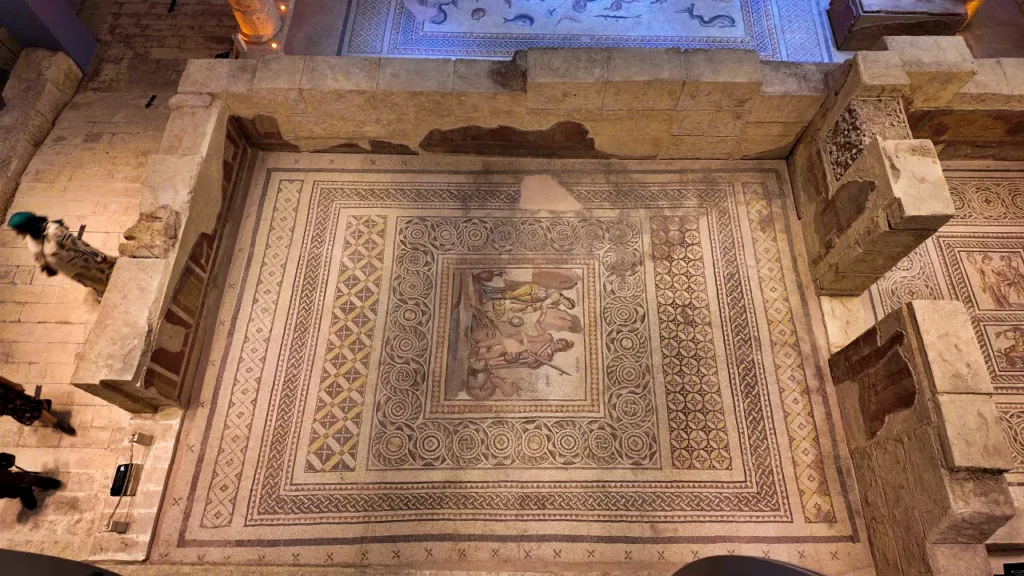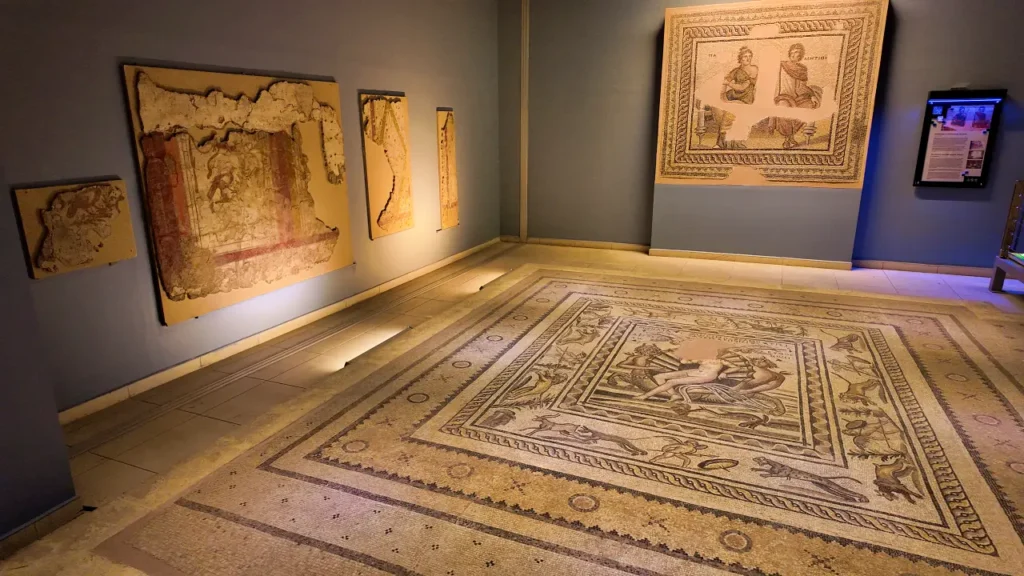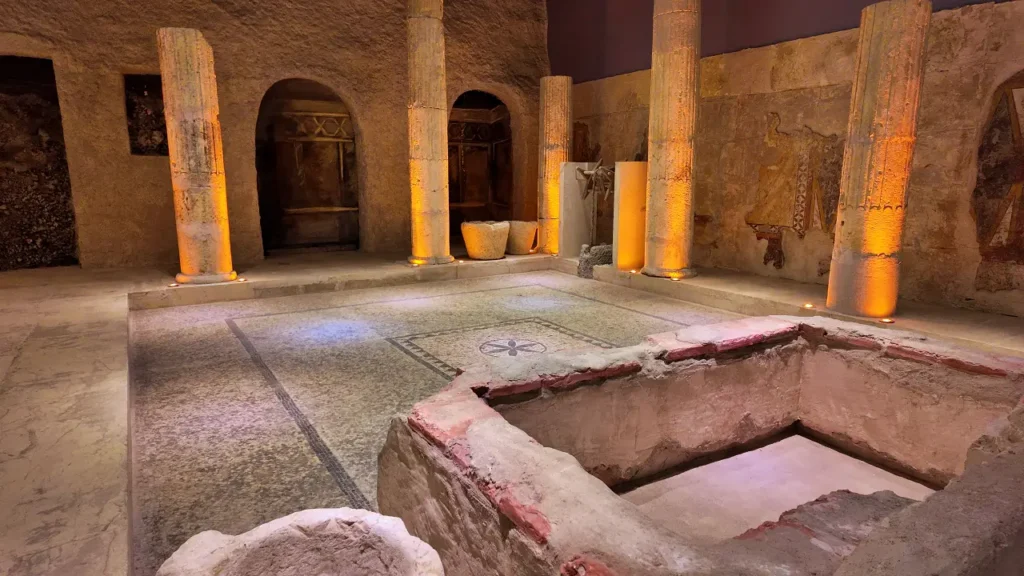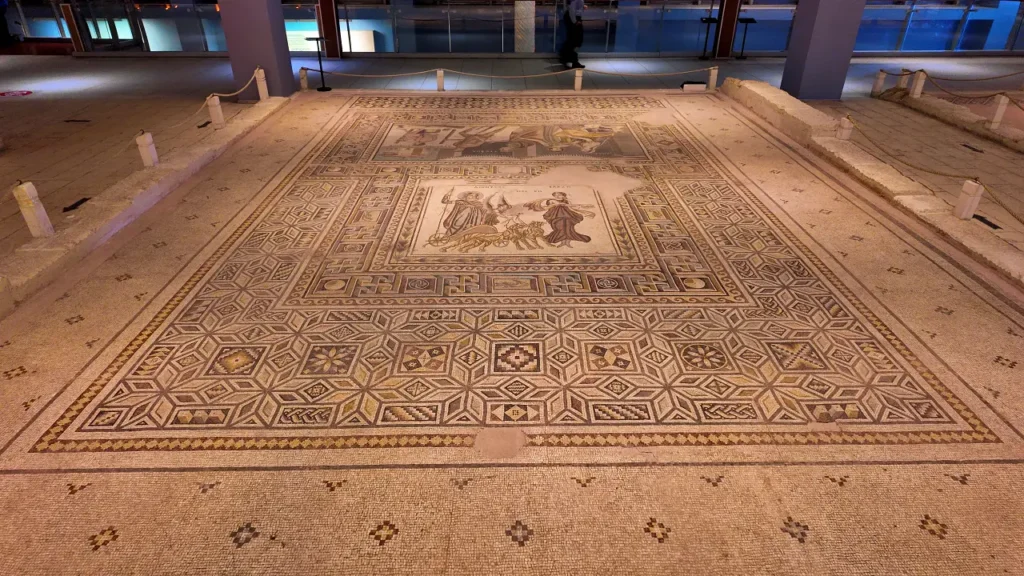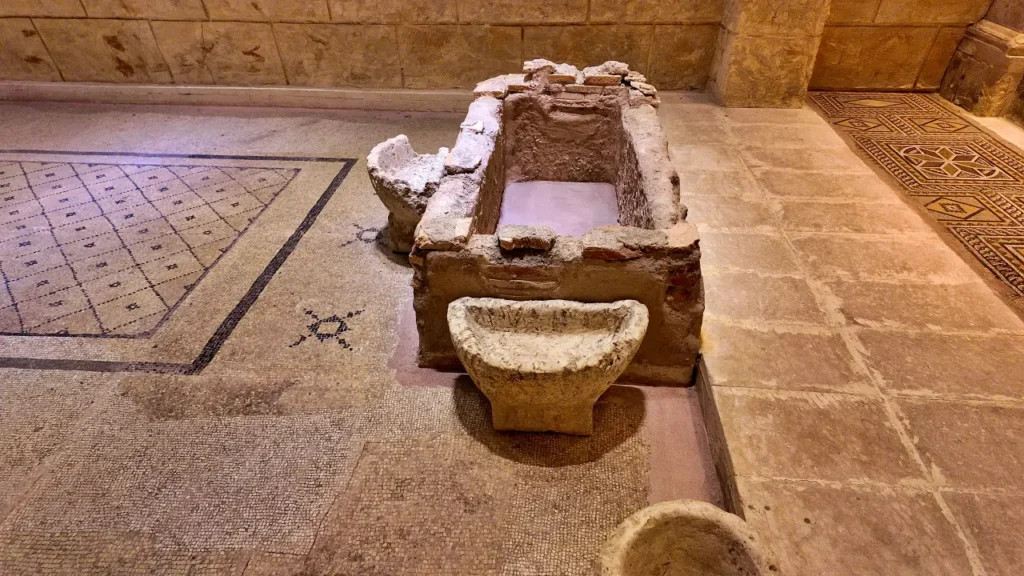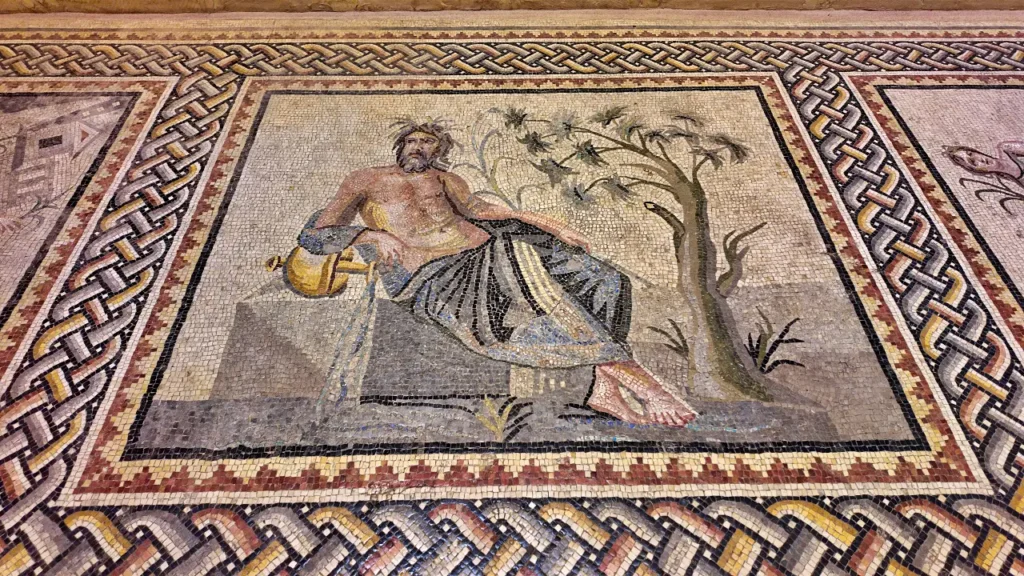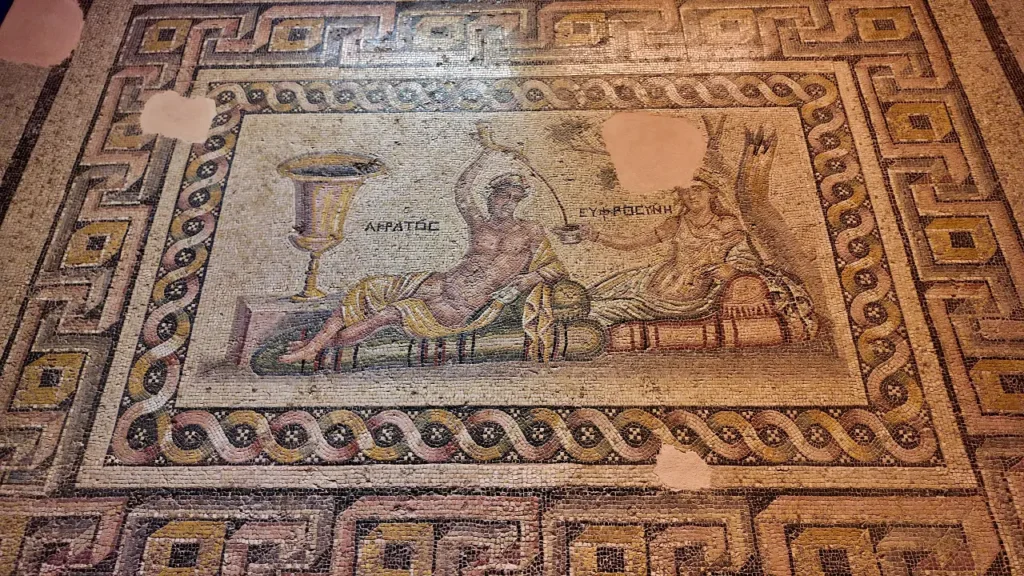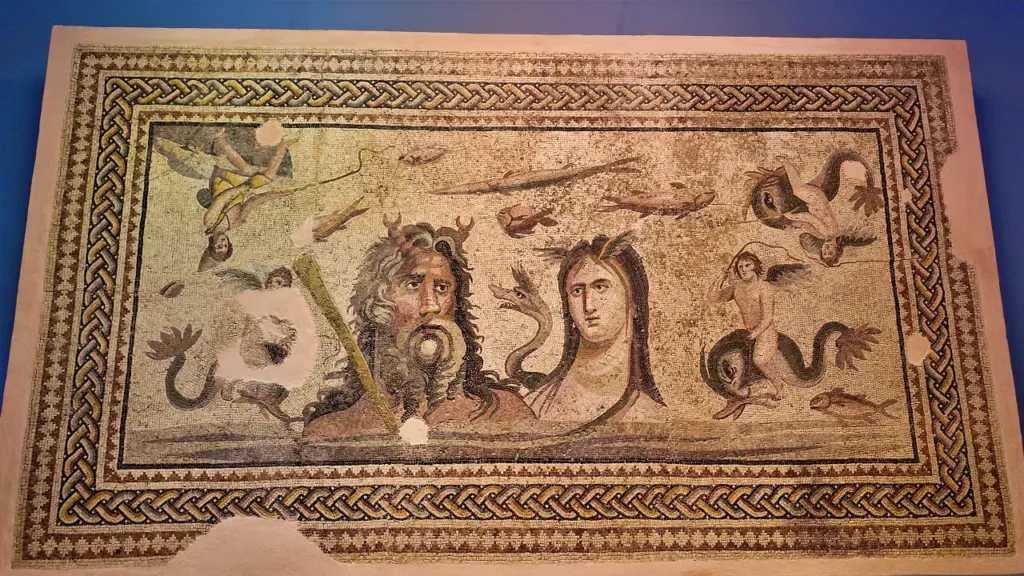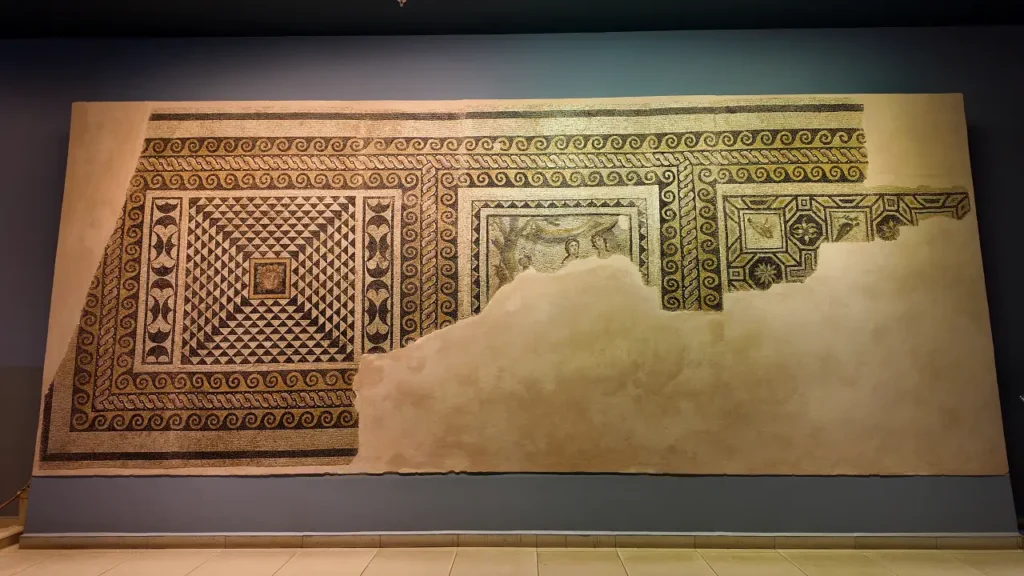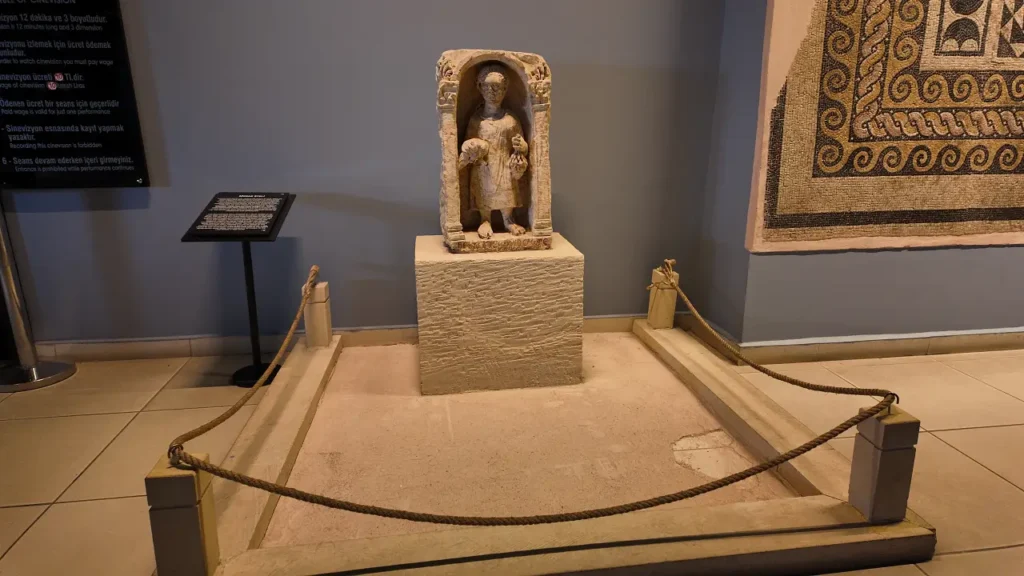Zeugma Mosaic Museum, located in the city of Gaziantep in southeastern Turkey, is one of the world’s most significant repositories of Roman-era mosaics. It offers visitors a breathtaking glimpse into the lives, art, and culture of ancient civilizations that once flourished in the region. If you are interested in archaeology, ancient history, or simply love intricate art, Zeugma is a must-see destination. In this blog post, we’ll explore everything you need to know about the museum and its highlights.
What is Zeugma Mosaic Museum?
Zeugma Mosaic Museum is the largest mosaic museum in the world, covering over 30,000 square meters and housing thousands of square meters of mosaics. The museum focuses on artifacts and mosaics excavated from the ancient city of Zeugma, which was founded by one of Alexander the Great’s generals, Seleucus I Nicator, in 300 BC. Later, Zeugma became part of the Roman Empire, flourishing as a strategic city along the Euphrates River.
The museum’s mosaics come from Roman villas, and they depict gods, goddesses, mythological scenes, and everyday life. The intricate designs and vivid colors of the mosaics have survived remarkably well, giving visitors a rare glimpse into the artistic achievements of ancient civilizations.
Why Should You Visit Zeugma Mosaic Museum?
Many people searching online for “Why visit Zeugma Mosaic Museum?” may be curious about what makes this museum unique. Zeugma is not just a historical site; it is a window into the past, where you can see the luxury and artistry of ancient Roman society. The mosaics are not just decorative; they tell stories of mythology, family life, and religious beliefs from over 2,000 years ago.
One of the most captivating aspects of the museum is how well the mosaics have been preserved. Some mosaics cover entire floors of ancient Roman homes, often depicting scenes of gods and goddesses, banquets, and animals in extraordinary detail. Visitors often comment on the size and beauty of these artworks, marveling at how such intricate works could have been created so long ago.
How Much Is Zeugma Mosaic Museum?
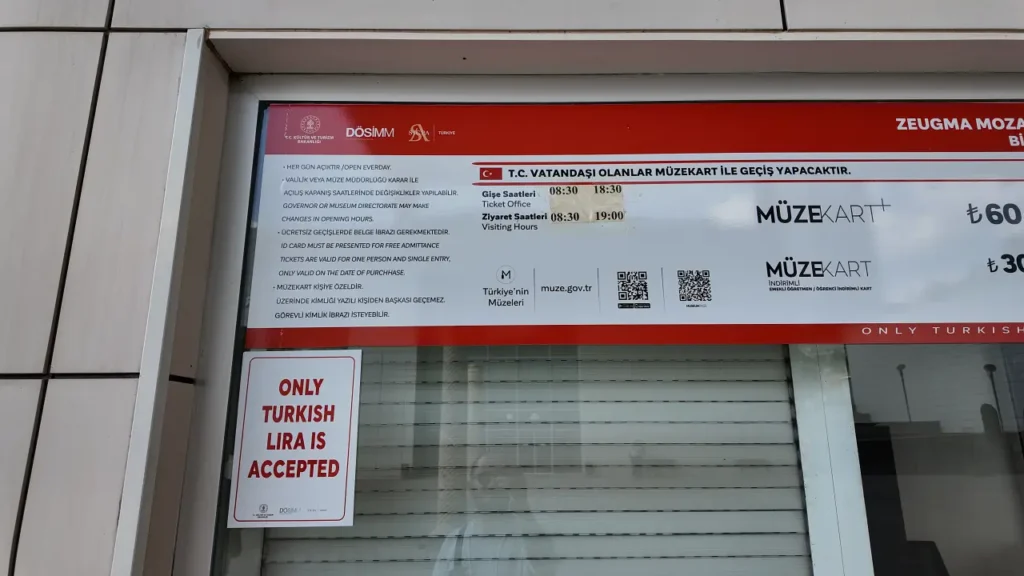
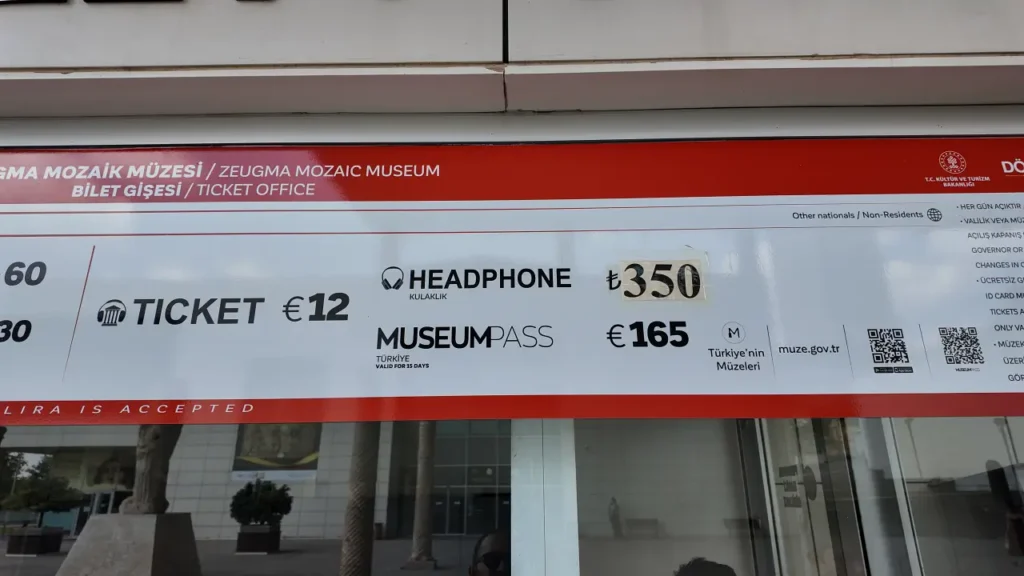
The entrance fee of Zeugma Mosaic Museum is 12€. If you are in a tour, you can buy museum pass issued only for 15 days by paying 165€
How to Get to Zeugma Mosaic Museum
If you’re wondering “How to reach Zeugma Mosaic Museum?”, getting to Gaziantep is relatively easy. The city is accessible by air, with the Gaziantep Oğuzeli Airport offering regular domestic flights from major cities like Istanbul and Ankara. From the airport, it’s a short drive to the city center where the museum is located. Alternatively, Gaziantep is well-connected by road and rail, making it an easy stop for those traveling around southeastern Turkey.
The museum is located in the heart of the city, and you can reach it by taxi, bus, or even on foot from various parts of Gaziantep. The city itself is a hub of culture and history, so visiting Zeugma Mosaic Museum can easily be part of a broader itinerary.
What to See at Mosaic Museum
For those searching “What to see in Zeugma Mosaic Museum?”, the museum boasts several highlights that shouldn’t be missed.
1. The Gypsy Girl Mosaic
The most famous mosaic in the museum is the Gypsy Girl, which has become a symbol of the ancient city of Zeugma. This mosaic is known for the hauntingly realistic eyes of the depicted figure, which seem to follow you as you walk by. Its detailed craftsmanship and emotive power make it one of the museum’s most beloved pieces.
2. The Poseidon and Oceanus Mosaics
The mosaics depicting Poseidon, the god of the sea, and Oceanus, the divine personification of the ocean, are stunning examples of Roman art. These mosaics adorned the floors of luxurious Roman villas, and they are remarkable for their rich colors and dynamic compositions, which illustrate mythological scenes.
3. Dionysus and the Triumph of Bacchus
Another major highlight is the mosaic showing Dionysus, the god of wine, and the Triumph of Bacchus. This mosaic captures a festive scene in brilliant colors, showcasing the Romans’ love for lavish banquets and celebrations. The details in the grapes, vines, and figures create a festive mood that brings the ancient world to life.
4. The Villa of the Maenads
Excavated from an ancient Roman villa, this large mosaic represents the Maenads, the female followers of Dionysus, dancing in celebration. The mosaic’s complexity and sense of movement are extraordinary, making it a must-see for visitors.
History of the Ancient City of Zeugma
If you’re curious about “What is the history of Zeugma?”, it’s essential to know that the city was once a major trading hub. Founded by Seleucus I in the 3rd century BC, it connected the Persian Empire to the Mediterranean through a network of trading routes. Over the centuries, the city changed hands, becoming part of the Roman Empire, and it grew into a prosperous settlement.
At its peak, Zeugma had a population of over 80,000 people and was home to luxurious villas, many of which were decorated with the mosaics now displayed in the museum.
In the 20th century, parts of the city were submerged due to the construction of the Birecik Dam on the Euphrates River. However, extensive archaeological efforts saved many artifacts and mosaics, which are now preserved in the museum.
The Importance of Mosaics in Roman Culture
For those interested in “Why were mosaics important in Roman culture?”, mosaics were not merely decorative; they were status symbols in Roman homes. Wealthy Roman families commissioned intricate floor mosaics to showcase their education, wealth, and artistic taste. Mosaics often depicted scenes from mythology, literature, or everyday life, serving both as conversation pieces and as expressions of personal identity.
Zeugma’s mosaics reflect this tradition, with detailed depictions of gods, animals, and human figures. The vibrant colors and precise craftsmanship reflect the Roman admiration for beauty, luxury, and storytelling through art.
Visiting Tips: How to Plan Your Trip
For anyone looking for “Tips for visiting Zeugma Mosaic Museum”, here are a few recommendations:
- Time to Visit: Plan to spend at least 2-3 hours at the museum to fully appreciate the mosaics and other artifacts.
- Audio Guide: The museum offers an audio guide in multiple languages, which is highly recommended for understanding the background and significance of each mosaic.
- Guided Tours: If you prefer a more in-depth experience, consider joining a guided tour. The knowledgeable guides provide historical context and share fascinating insights into the stories behind the mosaics.
- Photography: Photography is allowed inside the museum, so bring your camera to capture the beauty of the mosaics. However, be mindful of lighting, as some rooms are dimly lit to preserve the artifacts.
- Combine with a Visit to Gaziantep: After visiting the museum, explore the rest of Gaziantep, known for its historical sites, bustling bazaars, and famous pistachio baklava.
Conclusion: Is Zeugma Mosaic Museum Worth Visiting?
For those researching “Is Zeugma Mosaic Museum worth visiting?”, the answer is a resounding yes. Not only does the museum house some of the finest Roman mosaics in the world, but it also offers a deep dive into the history and culture of one of the most important cities of the ancient world. The quality, size, and detail of the mosaics make it an unforgettable experience for art lovers, history enthusiasts, and curious travelers alike.
Visiting Zeugma Mosaic Museum is like stepping back in time, offering a glimpse into the grandeur of Roman life and art. Whether you are in Turkey for a short visit or a longer journey, make sure to add this world-class museum to your itinerary.

